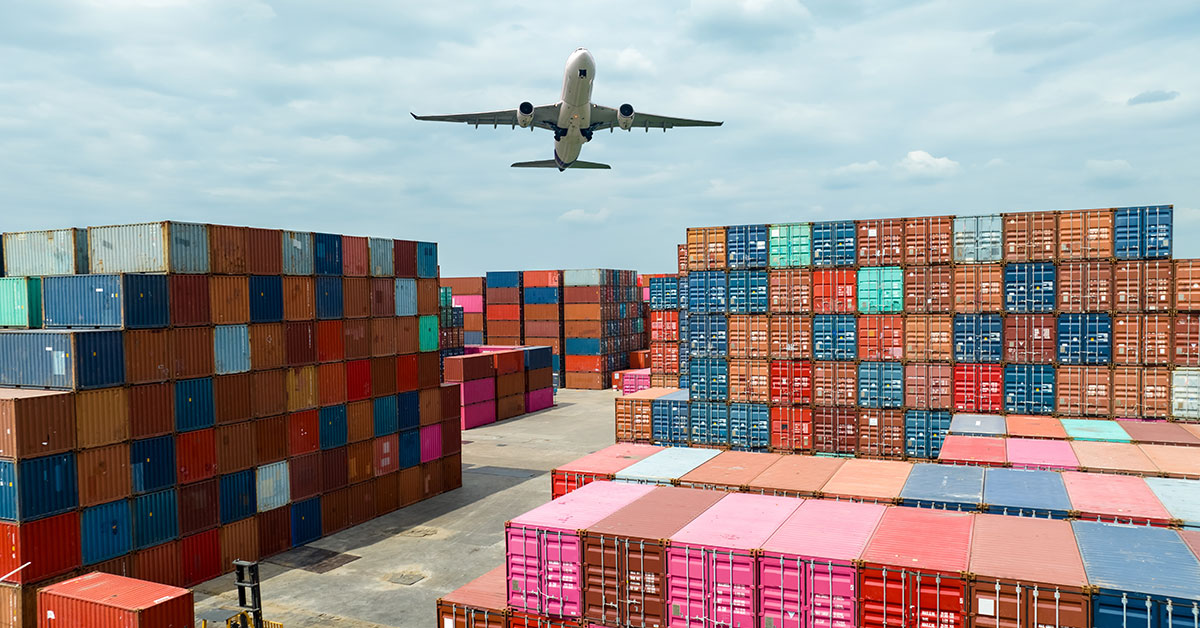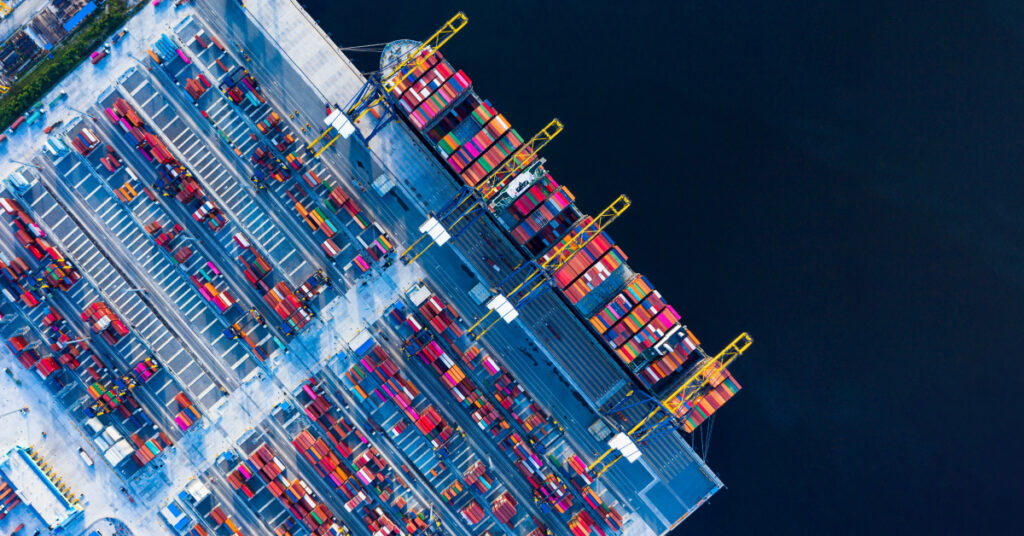Update June 11, 2025
Key Developments and Customer Impact:
Appeals Court Allows Trump-Era Tariffs to Remain (for now): A federal appeals court recently ruled that some of the broad tariffs imposed by the Trump administration can remain in effect while the court reviews a lower court decision that had blocked them. This means that tariffs on imports from most U.S. trading partners, as well as separate tariffs on Canada, China, and Mexico, may continue to be enforced.
- Customer Impact: This ongoing uncertainty means that the increased costs associated with these tariffs could continue to be passed on to consumers through higher prices on a wide range of imported goods.
Reduced Tariffs for Small-Dollar Goods from China (Shein, Temu, etc.): There has been a significant reduction in the tariff rate on items shipped from China valued at $800 or less, dropping from 120% to 54%.
- Customer Impact: This is potentially good news for consumers who frequently shop at online retailers like Shein and Temu, as it could lead to lower prices on small-value items from China. However, a 54% tariff is still substantial.
US-China Tariffs Reduced in 90-Day Reprieve: The U.S. and China have agreed to a three-month pause on some of their higher reciprocal tariffs, with U.S. tariffs on Chinese goods dropping to 10% from 125%, and China cutting its tariffs on American goods to 10% from 125%.
- Customer Impact: This temporary reduction could offer some relief on prices for goods traded between the two countries, but it’s a short-term measure, and the situation remains fluid.
Broader Impact on Prices: Generally, tariffs are taxes on imported goods, and companies often pass these increased costs on to consumers. Experts widely expect that new or increased tariffs will lead to higher prices across many categories.
- Customer Impact: You can anticipate seeing higher prices on various products, from groceries and electronics to apparel, footwear, and even building materials for homes.
The most recent news on China-U.S. trade negotiations, specifically regarding tariffs, indicates a cautiously optimistic, albeit still uncertain, path forward.
Latest Developments (as of June 11, 2025):
- “Framework Deal” Reached in London: After two days of intensive talks in London (concluding late Tuesday, June 10th), senior U.S. and Chinese trade representatives have agreed on a “framework deal” to de-escalate trade tensions. U.S. Commerce Secretary Howard Lutnick stated that they had reached a “framework to implement the Geneva consensus.”
- Presidential Approval Awaited: This framework is now subject to final approval by U.S. President Donald Trump and Chinese President Xi Jinping. President Trump has even publicly declared on his social media platform that a U.S. trade “deal with China is done,” pending his and Xi’s formal sign-off.
- Tariff Adjustments in the Framework (Reported): While specifics are limited, reports suggest the deal would see China maintain its current 10% tariffs on U.S. goods, and the U.S. would keep 55% tariffs on Chinese imports. This is a significant shift from the higher retaliatory tariffs seen earlier in the year.
- Focus on Rare Earth Minerals and Technology: A key issue addressed in the talks was China’s export restrictions on rare earth minerals, which are crucial for many modern technologies, including electric vehicles and defense. The U.S. side expects this issue to be resolved within the framework. Conversely, Beijing is pushing for the U.S. to lift restrictions on its access to advanced semiconductor technology.
- Building on Previous Truce: This agreement builds on a previous 90-day pause on steeper tariffs that was agreed upon in Geneva in May. That earlier agreement had reduced U.S. tariffs on Chinese goods to 30% from over 100%, and China’s tariffs on U.S. goods to 10% from 125%.
- Lingering Concerns and Uncertainty: Despite the positive statements, some skepticism remains. The fact that details are still scarce and presidential approval is pending adds to the uncertainty. Additionally, the U.S. and China had accused each other of breaching the non-tariff pledges from the Geneva agreement in the intervening month. Experts also note that the fundamental differences over China’s trade surplus with the U.S. may not have been fully resolved.
Customer Impact:
- Potential for Stabilized or Lower Prices: If the framework deal is approved and implemented, the reported tariff adjustments could lead to more stable or potentially lower prices on a range of goods, especially those heavily traded between the U.S. and China. This is particularly relevant for electronics, apparel, and goods that rely on rare earth minerals.
- Reduced Supply Chain Volatility: A more predictable trade environment could help reduce supply chain disruptions, which in turn could lead to more consistent availability of products.
- Continued Monitoring Advised: While the news is encouraging, customers should remain aware that trade negotiations are complex and can be subject to shifts. Keep an eye on official announcements from both governments regarding the approval and implementation of this “framework deal.” The 90-day period from the Geneva truce (which started in May) also means there’s a timeframe within which these issues are ideally meant to be fully resolved.
Update May 12, 2025
The first few months of 2025 have been a rollercoaster for global trade, marked by a dramatic escalation in US tariffs and subsequent retaliatory measures, followed by partial pauses and, most recently, a significant (though temporary) de-escalation between the US and China. If you’re feeling dizzy trying to keep up, you’re not alone. Here’s a breakdown of the latest developments:
On April 2nd, citing a national emergency due to trade deficits, the US announced a sweeping “Reciprocal Tariff” policy:
- A baseline 10% tariff on imports from all countries (effective April 5th).
- Higher, individualized “reciprocal” tariffs (ranging from 11% to over 50%) were planned for 57 specific countries starting April 9th, based on trade deficit ratios.
However, in a significant reversal on April 9th, the administration announced a 90-day pause (until July 8/9) on implementing most of the higher, country-specific reciprocal tariffs.
- What Remained During the Pause: The universal 10% baseline tariff stayed in effect for most countries. Crucially, the high tariffs on China (then 145%), the 25% tariffs on many Canadian and Mexican goods, and the steel/aluminum/auto tariffs were not included in the pause and remained active. Certain product exclusions (like pharmaceuticals, semiconductors, lumber, and IEEPA-exempt items like books) were also noted for the reciprocal tariff policy.
The US-China De-escalation (The Very Latest – May 12)
Just today, May 12, 2025, a major development emerged from US-China talks in Geneva:
- The US has agreed to reduce its punitive tariff rate on Chinese imports from 145% down to 30%.
- China has agreed to reduce its retaliatory tariffs on US goods from 125% down to 10%.
- This reduction is temporary, initially set for 90 days (expiring around August 10th), allowing time for further negotiations aimed at achieving more balanced trade and potentially including purchasing agreements.
- Important Note: The US maintains its baseline 10% tariff on China, as well as pre-existing tariffs (like Section 301 and Section 232 duties) imposed before April 2nd, 2025. China is also suspending other non-tariff countermeasures taken since early April.
Retaliation and Responses from Other Partners
- Canada: Responded to US actions with 25% tariffs on significant amounts (around CAD $60 billion total) of US goods, announced in March, plus 25% on non-USMCA compliant vehicles in April.
- European Union (EU): The EU published countermeasures targeting US goods (like motorcycles, boats, textiles, agricultural products) with additional tariffs of 10-25%, originally planned for April/May. However, following the US pause announcement, the EU suspended the implementation of these countermeasures until July 14/15 to allow space for negotiations. The baseline 10% US tariff still applies to EU goods.
Business Considerations
The rapid tariff escalations (and even the pauses) have sent shockwaves through the global economy:
- Market Volatility: Financial markets reacted sharply, with significant stock market drops following tariff announcements and rebounds following pauses or de-escalation news. Gold prices rose amid uncertainty.
- Supply Chain Disruptions: Businesses face immense pressure to diversify supply chains away from high-tariff regions (like China initially). There’s increased interest in nearshoring (e.g., Mexico, Central America) and sourcing from alternative markets (e.g., Vietnam, India, Thailand). Indirect trade routes (e.g., Chinese goods reaching the US via Mexico or other Asian nations) are expected to become more significant.
Looking Ahead
The situation remains highly fluid. Key dates to watch include:
- July 8/9, 2025: Expiry of the 90-day US pause on most higher reciprocal tariffs.
- July 14/15, 2025: Expiry of the EU’s suspension of its retaliatory measures.
- August 10, 2025: Expiry of the 90-day US-China tariff reduction agreement.
The coming months will be critical in determining whether the recent US-China de-escalation leads to a more stable trade environment or if we see a return to escalating tensions after the temporary pauses expire. Businesses and consumers worldwide will be watching closely.
Update April 17, 2025
Recent weeks have seen a significant escalation in global trade tensions, primarily driven by substantial new tariff measures enacted by the United States, invoking the International Emergency Economic Powers Act (IEEPA) to address perceived trade imbalances and national security concerns. This has triggered retaliatory actions, notably from China and the European Union.
Key Developments
- Broad U.S. Tariffs Implemented: In early April 2025, the U.S. imposed a baseline 10% “reciprocal tariff” on imports from most countries. Higher, country-specific reciprocal tariffs (ranging from 11% to 50%) targeting nations with significant trade surpluses with the U.S. were also announced but subsequently paused for 90 days (effective April 9) for most countries, excluding China, Hong Kong, and Macau.
- Escalating U.S.-China Tariffs: Tariffs on Chinese goods have seen rapid increases. Following initial hikes, the U.S. raised the reciprocal rate on imports from China, Hong Kong, and Macau to 125% (effective April 9/10). Combined with existing tariffs (related to fentanyl and Section 301), the total potential U.S. tariff rate on some Chinese imports is now cited as high as 245%. Exemptions for certain electronics, including semiconductors and cell phones, were announced mid-April. The U.S. is also eliminating the $800 de minimis threshold for shipments from China and Hong Kong, effective May 2, 2025.
- Retaliation:
- China: Responded in kind, raising its retaliatory tariff on U.S. goods to 125% (effective April 12). China has also employed other measures like export controls and adding U.S. firms to unreliable entity lists.
- European Union: Is preparing retaliatory tariffs (expected 25%) on a range of U.S. goods (including steel, aluminum, agricultural products, consumer goods) in response to U.S. steel and aluminum tariffs (reimposed globally at 25% in March). Implementation, initially planned for early/mid-April, is now expected around mid-April, potentially consolidated into phased rollouts.
- Canada: Imposed 25% retaliatory tariffs on U.S.-made automobiles, alongside other measures targeting U.S. goods. (U.S. tariffs on Canadian/Mexican non-USMCA goods remain largely at 25%, with some exceptions).
- Other Significant U.S. Tariffs: A global 25% tariff on automobiles and key auto parts took effect in early April/May, and a 25% global tariff on steel and aluminum was implemented in March.
Considerations For Customers (Importers, Exporters and Domestic Perspective):
All shipping customers should anticipate increased costs (direct or indirect), potential delays, and heightened complexity. International shippers face significant compliance challenges and strategic decisions regarding sourcing. Domestic shippers will primarily experience the pass-through economic effects. Vigilance, proactive communication with logistics partners, and strategic adaptability are crucial for navigating the current environment.
1. Increased Costs:
- Higher Landed Costs
- Higher Export Costs
- Increased Customs & Brokerage Fees
- Freight Rate Volatility
2. Potential Delays & Longer Transit Times:
- Customs Clearance scrutiny of origin, classification, and value
- Port Congestion and Container Supply concerns (for US Exports
- Supply Chain Disruptions
3.Heightened Compliance Burden:
- Origin Verification
- Accurate Classification
- Constant Monitoring
4.Strategic Supply Chain Adjustments:
- Sourcing Diversification
- Inventory Management
- Network Re-evaluation and Optimization
For Domestic Shipping Customers:
While less directly impacted by customs duties, domestic shippers will feel ripple effects:
1.Indirect Cost Increases:
- Pass-Through Costs
- Higher Input Costs for Raw Materials
2.Potential Shifts in Demand & Volume:
- Domestic Sourcing Preference
3.Supply Chain Ripple Effects:
- Capacity & Timing
- Warehousing and Inventory Focus
April 10, 2025
The global trade landscape experienced a significant shift in early 2025 as the United States rolled out a comprehensive new set of tariffs on imported goods. Driven by goals to shrink trade deficits, revitalize domestic manufacturing, and achieve “fairer” trade deals based on reciprocity, these measures are fundamentally reshaping how goods flow across borders. While the intention is to bolster the U.S. economy, a closer look reveals a high potential for logistics challenges for American companies selling their products abroad. Partnering with highly capable multimodal logistics suppliers like Odyssey Logistics is essential for maintaining a fluid transportation network in times of disruption.
Understanding the New Tariff Structure
The new U.S. trade policy isn’t a single action, but a multi-pronged strategy enacted through tools like the International Emergency Economic Powers Act (IEEPA) and Section 232 of the Trade Act of 1962. Here’s a breakdown of the key components implemented largely between March and April 2025*:
- The 10% Baseline: A universal 10% import duty now applies to nearly all goods entering the U.S., regardless of origin. This broad measure increases costs for consumers and businesses relying on imports.
- “Reciprocal” Tariffs: Layered on top of the baseline, higher tariffs target roughly 60 countries with significant trade surpluses with the U.S. These are designed to mirror the duties those nations impose on American goods. Examples include substantial additional duties on goods from major trading partners like China (34% extra), the European Union (20% extra), India (26% extra), Japan (24% extra), and South Korea (25% extra).
- Sector-Specific Tariffs: Certain industries face even steeper levies. A 25% global tariff hit steel and aluminum products (with Russian aluminum facing a staggering 200% tariff). Imported automobiles also face a 25% tariff, with tariffs on auto parts following suit.
- North American Nuances: While the U.S.-Mexico-Canada Agreement (USMCA) offers exemptions for compliant goods, non-compliant products and specific sectors (like Canadian energy) still face tariffs, highlighting the complexities even within established trade pacts.
The Intended Goal vs. Export Reality
Tariffs increase the cost of imported goods, aiming to drive demand towards American-made products. This is intended to support key U.S. industries like manufacturing, energy, agriculture, technology (especially semiconductors), and defense/aerospace. However, exporters should anticipate potential economic and logistical challenges, including higher costs for American goods overseas and disruptions to transportation networks (for example: rail trucking dislocation and inland equipment availability).
Retaliation: The Biggest Blow to Exports
Predictably, America’s major trading partners haven’t accepted these tariffs passively. Retaliatory measures targeting U.S. exports were swift and significant:
- China: Implemented tariffs these numbers continue to move on key U.S. agricultural goods (soybeans, pork, beef, fruit, dairy, etc.) and suspended imports of U.S. logs.
- Canada: Hit billions of dollars’ worth of various U.S. goods with 25% tariffs.
- European Union: Responded with tariffs (potentially up to 50%) on billions worth of U.S. exports, including whiskey, steel, aluminum, and agricultural products.
This wave of retaliation directly undermines the potential for U.S. export growth. Industries like agriculture, a major U.S. export sector, are finding key markets imposing new barriers, directly countering any domestic benefits the tariffs might create. Finding and creating demand for markets that have less retaliatory postures will be critical.
Beyond Retaliation: Logistical Hurdles Emerge
The disruption caused by the tariffs extends into the complex world of logistics:
- Supply Chain Shifts: As import patterns change, logistics networks must adapt. This could mean new shipping routes, adjusted transportation capacities, and potentially higher costs as companies scramble to reconfigure supply chains.
- Increased Administrative Burden: Navigating new tariff rules, customs procedures, and rules of origin adds complexity and cost for exporters. Notably, the elimination of the “de minimis” exemption for low-value shipments from China requires more rigorous documentation for all imports from that country, adding friction.
- Potential Port Congestion: Shifts in trade volumes and heightened customs scrutiny could lead to delays at ports and border crossings, slowing down the movement of goods both in and out of the U.S.
Outlook: Choppy Waters Ahead for U.S. Exports
While the new U.S. tariffs aim to reshape trade dynamics in favor of domestic production, the immediate impact on U.S. exports appears challenging. The combination of widespread retaliatory tariffs from major partners and emerging logistical complexities creates significant hurdles.
While some specific U.S. sectors might see increased domestic demand, and certain countries with favorable trade relations might theoretically increase imports of U.S. goods (especially if competitors face higher tariffs), the overarching picture points towards disruption for American exporters. The path forward involves navigating a more complex, potentially costlier, and certainly more uncertain global trade environment. Businesses involved in international trade will need to remain agile and informed as these policies continue to unfold and ripple through the global economy.
Partnering with highly capable multimodal logistics suppliers like Odyssey Logistics is essential for maintaining a fluid transportation network in times of disruption.
*Numbers reported are current at time of publication.








